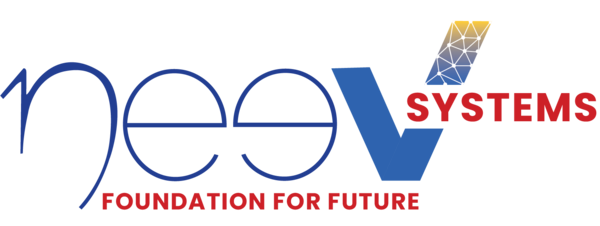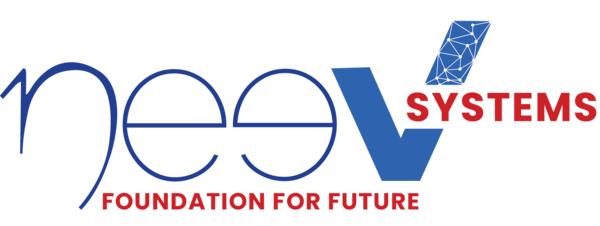Introduction
In the digital age, enterprise applications form the backbone of modern businesses, driving operations, enhancing user experiences, and supporting growth. However, the effectiveness of these applications heavily relies on their performance and reliability, which needs proactive Application Management Services (AMS). These services, often outsourced to specialized third-party providers, offer comprehensive application lifecycle management—spanning deployment, monitoring, updates, and issue resolution. AMS providers ensure optimal system performance, enable seamless integration of new applications, and offer cloud management, allowing businesses to focus on their core functions.
Let’s now look at a few challenges faced by businesses with in-house application management, necessitating the need for outsourcing AMS to a trusted partner.
What Challenges Do Businesses Face With In-house Application Management?
- Lack of Proactive Support: Reactive approaches to application management can result in downtime, frustrated users, and tarnished reputations. Organizations often struggle to provide proactive support due to limited visibility into potential issues.
- Vendor Management Complexity: Many businesses rely on multiple vendors for different aspects of application management, which can lead to coordination challenges, compatibility issues, and an overall lack of streamlined management.
- Communication and Responsiveness: Effective communication is the backbone of successful application management. Delays in issue resolution due to communication breakdowns can escalate minor problems into major disruptions.
- Lack of Comprehensive Monitoring: Inadequate monitoring tools and practices can result in overlooking subtle performance degradations or impending issues, impacting the overall application health.
- Scalability Challenges: As businesses grow, in-house management might struggle to scale with increasing demands, leading to bottlenecks, performance degradation, and operational inefficiencies.
- Skill Gap: The ever-evolving landscape of technologies requires a wide range of expertise. Maintaining a team with the necessary skill set for various applications can be challenging and resource-intensive.
- Legacy Systems Management: Organizations with legacy applications often find it challenging to manage and integrate them seamlessly with newer technologies, leading to compatibility issues and limited functionality.
As businesses increasingly recognize the significance of Application Management Services (AMS) in maintaining efficient operations, they also need to address the challenges that come with it. A proactive application management strategy is the key to overcoming these challenges and ensuring smooth application management.
Overcoming AMS Challenges: Building a Proactive Application Management Strategy
- Comprehensive Assessment: A successful AMS strategy begins with thoroughly assessing your application landscape. Understand the intricacies of each application, its dependencies, and its role within your business processes. This assessment provides the foundation for tailoring your AMS approach.
- Clear Objectives: Define clear objectives for your AMS strategy. Whether enhancing application performance, ensuring security compliance, or minimizing downtime, having well-defined goals guides your strategy’s direction.
- Proactive Monitoring: Implement proactive monitoring systems that track real-time application performance. This lets you identify potential issues before they escalate into disruptions, reducing downtime and user frustration.
- Issue Response and Resolution: Develop a streamlined issue reporting, tracking, and resolution process. Quick and efficient issue resolution minimizes application downtime and maintains user satisfaction.
- Continuous Improvement: An effective AMS strategy is an iterative process. Regularly analyze the data gathered from monitoring and issue resolution to identify patterns and areas for improvement. Continuously refine your strategy based on these insights.
Once you have built your AMS strategy, reflect back and refine it with time as it constantly evolves due to several factors.

Streamline Application Management Today
Reasons Why AMS Strategy Is Constantly Evolving?
- Technological Advancements: The digital landscape is constantly in flux, with new technologies and tools emerging regularly. AMS strategies must evolve to incorporate these innovations, ensuring applications remain at the cutting edge of functionality, security, and performance.
- Changing Business Needs: As businesses expand, pivot, or face new challenges, their AMS requirements evolve accordingly. Strategies must be adaptable to meet shifting business needs while maintaining optimal application performance.
- Security Landscape: The threat landscape constantly evolves, with cyber threats becoming more sophisticated. AMS strategies must integrate the latest security measures to safeguard applications and sensitive data.
- User Expectations: Users’ expectations for application performance, responsiveness, and user experience are continually rising. AMS strategies must keep pace with these expectations to ensure user satisfaction.
- Cloud and Hybrid Environments: The shift toward cloud and hybrid environments introduces new complexities to application management. Strategies must adapt to manage applications across diverse infrastructures effectively.
- Data-driven Insights: With the growing importance of data analytics, AMS strategies are incorporating data-driven insights to optimize performance and anticipate potential issues.
- Regulatory Changes: Compliance requirements and regulations in various industries are subject to change. AMS strategies must be agile enough to adapt to new compliance standards.
- Competitive Edge: Businesses are constantly seeking a competitive edge. AMS strategies that leverage the latest technologies and practices can provide this edge by enabling faster innovation and improved customer experiences.
Proactive Application Management Strategies To Watch Out In 2024
- Agility and Innovation: Enterprise applications must evolve in parallel with business needs, supporting agile planning and quicker innovation. The essential component of a robust AMS strategy is to focus on integrating enterprise applications with core systems like ERP, HCM, and FP&A while also ensuring seamless connectivity with specialized industry solutions. This integration supports agility by enabling quick adjustments to business processes, forecasts, and resource allocation.
For example, Amazon uses ERP software called Systems Analysis and Program Development (SAP) to integrate and streamline its business processes. By leveraging ERP integration, Amazon has improved operational efficiency, enhanced inventory management, and provided a seamless customer experience.
- Adopt Microservices Architecture: Adopt a services-based approach for your application architecture and consider the migration of legacy monolith applications to modular structures like SOA or microservices. These architectures involve constructing or reconstructing applications as a collection of small, autonomously deployable components, each catering to a specific business function. The benefits are substantial – facilitating rapid adaptation to changing business demands, streamlining shared functionality into efficient shared services, and enabling independent scalability of services.
For example, Capital One, a leading financial services provider in the US, adopted microservices architecture. They migrated their applications to AWS and enabled the containerization of services, leveraging the benefits of microservices. By breaking down its monolithic applications into smaller, independently deployable services, Capital One achieved greater agility, scalability, and efficiency in its application development and deployment processes. It also enabled them to leverage the benefits of cloud computing and containerization to optimize their services.
- Alignment between IT and business is crucial: Organizations must closely integrate their application management services with their core business functions. Failing to establish this connection can lead to significant expenses. An application management solution aligned with the business effectively predicts and detects disruptions in business processes caused by IT issues. It then automatically initiates self-healing processes to resolve these disruptions promptly. This approach anticipates and identifies anomalies in business operations and precisely identifies the underlying IT problems responsible for the disruptions, triggering instant automated resolutions.
- Holistic Approach to Monitoring: Build a comprehensive monitoring strategy within your AMS framework. Automated tools can monitor routine tasks, while human specialists can monitor and troubleshoot performance and user-related issues. This holistic approach ensures that both automated and specialized aspects of management are covered effectively. For example, Walmart uses business intelligence to determine multiple core aspects of its business, including surge pricing. Algorithms monitor traffic conditions, journey times, driver availability, and customer demand in real time, meaning prices adjust as demand rises and traffic conditions change. Dynamic pricing in real-time action is akin to what airlines and hotel chains use to adjust costs based on the need.
- User-Centric Perspective: Infuse a user-centric perspective into your AMS strategy. Alongside technical considerations, prioritize the user experience to ensure that applications meet user expectations and contribute to efficient business transactions. For example, Amazon is known for its customer-centric approach, focusing on providing a seamless shopping experience, fast delivery, and excellent customer service. They use customer data to personalize recommendations and continuously improve the customer journey.
- Automate for Seamless Operations: An integral aspect of your application strategy involves the implementation of automation across every phase of the application life cycle. This encompasses the automation of tasks spanning application development, release, deployment, testing, configuration, management, and monitoring. The aim is to achieve maximum automation throughout the application’s entire life cycle.
- Provide Cognitive Solutions for Complex Issues: Complex problems often require sophisticated solutions. Applying AI-driven cognitive solutions can revolutionize issue identification and resolution. For example, Large manufacturers dealing with invoices stuck in their ERP systems can benefit from AI’s ability to pinpoint errors, choose appropriate automation processes, and eliminate manual interventions. This strategic integration of AI and cognitive capabilities can elevate the efficacy of application management to new heights.
- Continuous Improvement: Implement a continuous improvement aspect in your application management systems and AMS strategy. Regularly assess the efficiency of automated processes, refine them based on insights, and continuously update the knowledge and skills of your specialist team. This ensures that your AMS strategy evolves to meet changing technological landscapes and business needs.
- Ensure Specialist-Driven Expertise: Balancing automation and manual intervention is essential. Manual intervention at all levels is unnecessary and must be replaced with automation. But troubleshooting performance issues, resolving user problems, and managing complex background operations require specialized human-driven expertise. Have a dedicated team of specialists, including database administrators, OS administrators, storage experts, and network professionals, to handle these intricate tasks effectively.
Achieve Proactive Application Management With Neev Systems
- Extensive support services: We provide functional and technical support, enhancement requests, development and bug fixes, new development requests, services request follow-up, and training.
- Strong Communication Channels and SLAs: Our Service Level Agreements (SLAs) cover different support models, including resource augmentation, capacity augmentation, and managed/shared support services, thus guaranteeing timely responses and issue resolutions, minimizing downtime, and keeping your applications running seamlessly.
- 24/7 Support: We provide a dual shore support team with a 24/7 coverage option. Clients can also opt for weekend support for all time zones.
- Named Resource Support Model: Our flexible Named Resource Support model optimizes cost and resource utilization and improves application availability, ensuring they can scale according to changing business needs.
- Expertise and Specialization: We specialize in managing and supporting a wide range of applications, including but not limited to ERP systems, CRM applications, supply chain management systems, HR management systems, Sales, Quoting, Order management Systems, and more.
- Strategic Partnerships: We offer bespoke Application Management Services in partnership with premier software vendors like Oracle, SFDC, ServiceNow, Snowflake, and Mulesoft. Our enduring alliances with these OEMs allow us to leverage their advancements to support our clients in application portfolio management.
- Seamless Transition: Our teams facilitate smooth business operations with seamless transitions during application upgrades and migrations.
- Technological Innovation: We integrate cutting-edge technologies like AI, machine learning, and cloud computing into our services, allowing you to leverage advancements without heavy upfront investments.
- Security and Compliance: We implement robust security measures, including intrusion detection and vulnerability assessments, safeguarding your applications against cyber threats. They also ensure compliance with industry regulations, protecting sensitive data.
- Scalability and Flexibility: We offer scalability to match your business growth. We can quickly adjust resources and infrastructure, accommodating changing demands without the burden of managing complexities in-house.
- Cost Reduction: Our certified experts boost your bottom line by strategically reducing application management costs without compromising quality.
Conclusion
In the dynamic business landscape, Application Management Services (AMS) are crucial in ensuring efficient application performance, agility, and user satisfaction. Adopting strategies like microservices architecture, cloud SaaS platforms, and automation combined with expertise is essential. Partnerships with specialists like Neev Systems enhance the journey, offering seamless support, security, scalability, and technological innovation. We provide comprehensive support, innovative solutions, and security measures that safeguard applications. With 24/7 availability, strategic alliances, and a commitment to cost-effective quality, we empower businesses to navigate application management challenges confidently. If you’re looking for an experienced and reliable application management services partner, get in touch with our experts today.

Stay Ahead with Expert AMS Solutions

Sitaram Pothula
With 22+ years of IT experience, Sitaram combines technical expertise with strategic leadership. He has led engineering teams and delivered solutions across BFSI, telecom, and healthcare. Sitaram excels in aligning technology with business goals to drive innovation and efficiency.


